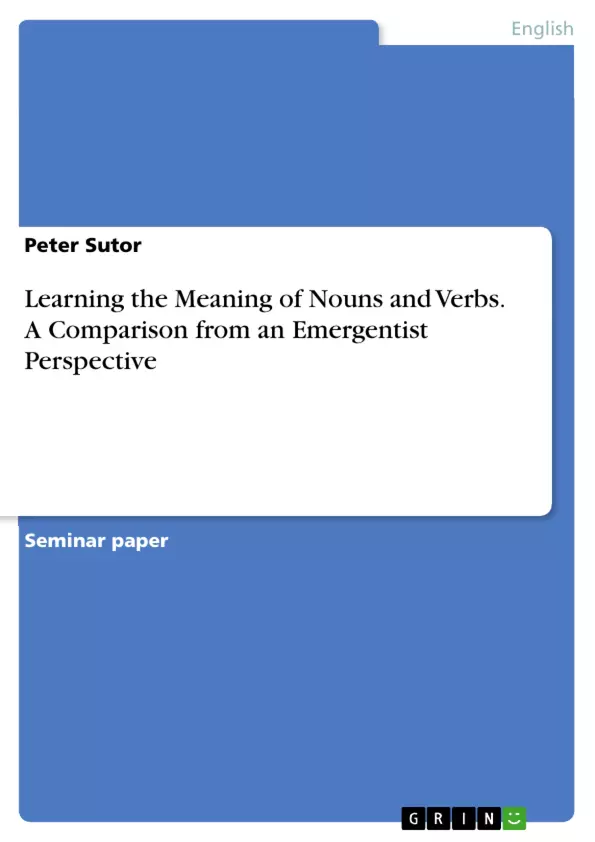This essay, which will be focusing on the psychological processes involved in learning the meaning of nouns and verbs will be based entirely on books and articles representing the emergentist/constructivist approach. Especially, for the part on learning nouns, an emergentist model called The Emergentist Coalition Model, developed and described by George Hollich, Kathy Hirsh-Pasek and Roberta Michnick Golinkoff (2000), will stand in the focus. It regards early word learning as a process of incremental knowledge construction, where each step on this path changes or reshapes the child’s cognitive system and provides it with new equipment for the task of further word learning. The second part, dealing with the acquisition of verbs, is based primarily on texts by Ewa Dabrowska (2009) and Gilette et al. (1999), which treat word learning cross-categorically, focusing on properties of words beyond the category level, especially their concreteness, imageability and their semantic and syntactic properties.
Finally, some suggestions will be made as to how the psycholinguistic insights presented so far can be put to use in school, in service of second language teaching.
Inhaltsverzeichnis (Table of Contents)
- Introduction
- Basic theoretical reflections
- Biases, constraints and cues: The Emergentist Coalition Model (ECM)
- Reference or the semiotic/symbolic function of language
- Other principles of the ECM
- Results of the ECM studies
- Learning verbs
- Conclusions for second language teaching at school
- Conclusion
Zielsetzung und Themenschwerpunkte (Objectives and Key Themes)
This essay examines the psychological processes involved in learning the meaning of nouns and verbs from an emergentist perspective. It aims to provide insights into how children acquire these fundamental word classes and how these insights can be applied to second language teaching.
- The Emergentist Coalition Model (ECM) and its application to early word learning
- The role of biases, constraints, and cues in word acquisition
- Cross-categorical approaches to verb learning
- The relationship between word concreteness, imageability, and semantic/syntactic properties
- Implications for second language teaching
Zusammenfassung der Kapitel (Chapter Summaries)
The introduction establishes the importance of understanding language acquisition for foreign language teaching and highlights the theoretical divide between nativist and emergentist approaches. The second chapter explores the basic theoretical reflections surrounding language acquisition, comparing the symbolic nature of human language to the indexical nature of animal communication. The third chapter delves into the Emergentist Coalition Model (ECM) and its principles, focusing on the role of reference and other factors influencing early word learning.
Schlüsselwörter (Keywords)
The main keywords and focus topics of this essay include: emergentist perspective, language acquisition, word learning, nouns, verbs, Emergentist Coalition Model (ECM), biases, constraints, cues, concreteness, imageability, semantic properties, syntactic properties, second language teaching.
- Quote paper
- Peter Sutor (Author), 2016, Learning the Meaning of Nouns and Verbs. A Comparison from an Emergentist Perspective, Munich, GRIN Verlag, https://www.hausarbeiten.de/document/432920


